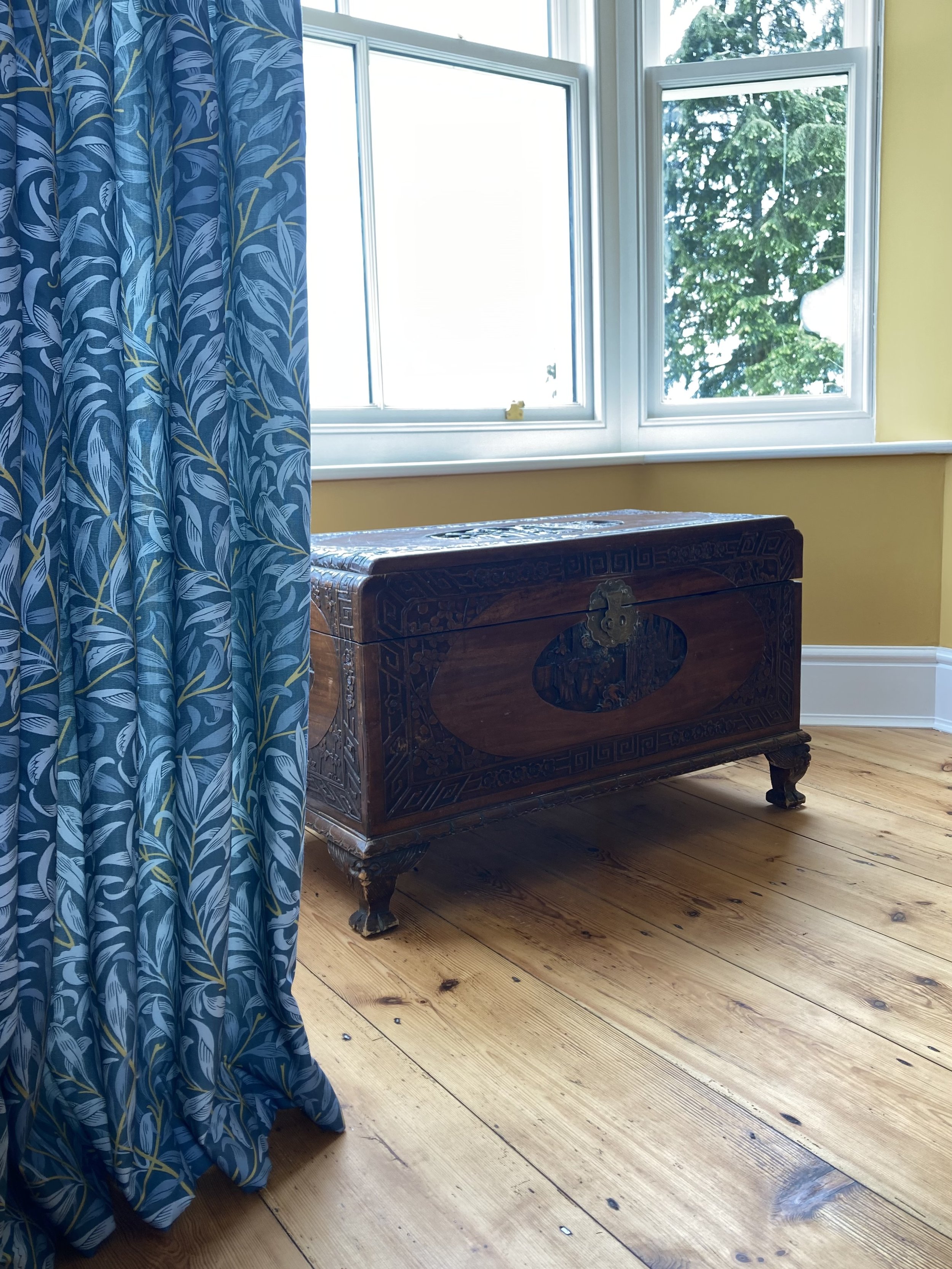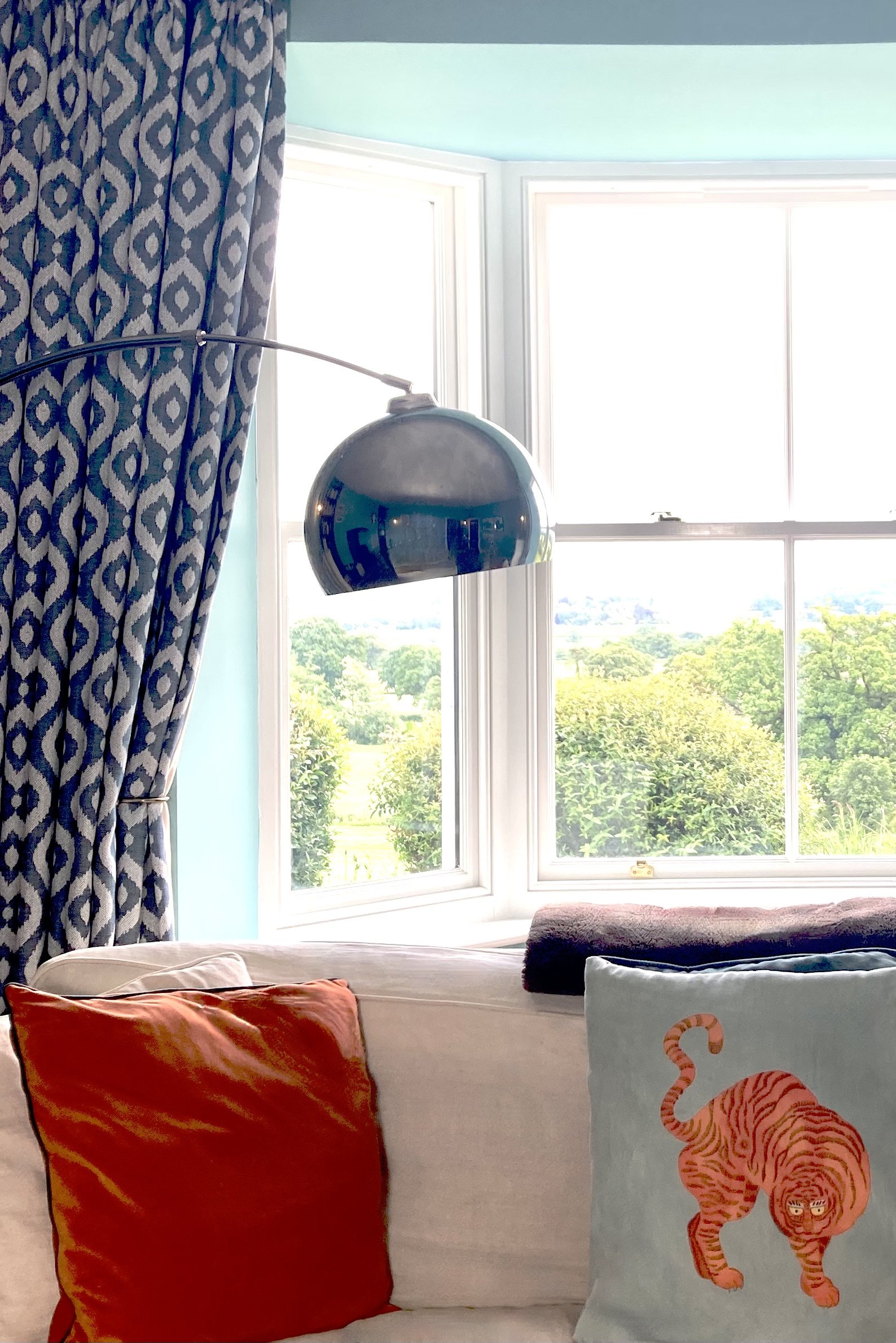How to Create a Vibrant and Personalised Interior Design Scheme: Using Maximalism.
How to Create a Vibrant and Personalised Interior Design Scheme Using Maximalism
Over the last few weeks we’ve been exploring unstated ways to bring tranquillity and calmness into the home. However, we’ve about to flip those design trends on their head and look at an area of design that’s the total opposite, Maximalism!
In the world of interior design, maximalism is the antithesis of minimalism. Where minimalism focuses on simplicity and restraint, maximalism embraces abundance and bold expression. This design philosophy is perfect for those who love to fill their spaces with colour, pattern, texture, furniture and an eclectic mix of personal treasures.
The fundamentals of creating a vibrant and personalised interior design scheme using a maximalism approach can transform your home into a lively and unique reflection of your personality and style. Although it may seem easy to cram as much into a space as possible and hope it’ll all sit together harmoniously, there’s actually quite a lot of skill in getting it ‘right’. In this week’s blog, we explore how to effectively implement maximalism in your home, offering our expert tips and insights.
Lets begin with understanding Maximalism in Interior Design…
Maximalism is all about embracing "more is more." This design approach encourages the use of bold colours, eclectic patterns, and a variety of textures to create a space that is rich in visual and tactile interest. Unlike minimalism, which often adheres to a strict aesthetic, maximalism allows for greater freedom and creativity, making it an ideal choice for those who love to experiment with the senses.
So what are the key Characteristics of Maximalism?
Bold Colours: Maximalism often features a vibrant palette with rich, saturated hues. Layering colour on colour and making a statement with clashing blends.
Eclectic Patterns: Combining, layering and mixing different patterns is a signature-must of maximalist design.
Layered Textures: As we’ve explored in many other aspects of interior design trends, mixing various textures adds depth and interest to a space. With maximalism times it by 100, stimulate the senses.
Personal Collections: Displaying personal items and collections contributes to the unique, personalized feel. We often see in maximalism a nod to the explorer. Collecting treasures and sitting them all alongside one another to great a museum of interest and storytelling.
Mix of Styles: Maximalism embraces a blend of different design styles, from vintage to contemporary. Expression is a the heart of maximalism and a fun way of unapologetically embracing all that you love and are interested in.
Steps to Create a Maximalist Interior
So where to start…
1. Start with a Bold Colour Palette
What big bold colours do you love? The foundation of a maximalist interior often begins with a bold and vibrant colour palette. Choose colours that you love and that reflect your personality. Don't be afraid to mix and match; maximalism thrives on unexpected colour combinations. It always useful to play around with colour combinations and keep building until you find what works for you. Colour is one of our areas of expertise, if you need a helping hand, please feel free to contact us and book in a colour consultation. Head over to our contact us page here.
Tips for Choosing Colours:
Primary and Secondary Colours: Select a few primary colours as the base, and complement them with secondary and accent colours.
Contrast and Harmony: Use contrasting colours to create visual interest, but ensure they harmonise well together. Again, this can be a little tricky so take your time.
Incorporate Black and White: Adding black and white elements can help ground the design and provide balance. Framing colour with black and white helps to give key areas a focal point to stand out from the rest of the scheme.
2. Embrace Eclectic Patterns
Another significant element of maximalist design is pattern, it’s quite significant in fact. Mix and match different pattern combinations to create a dynamic and visually stimulating space. You name it, florals, geometrics, stripes, and animal prints can all coexist in a maximalist room!
Tips for Mixing Patterns:
This is where the skill comes in. You may be thinking how can all of these pattern combinations work together in the same space? Well, there’s lots to consider in order to make it cohesive and a pleasant space to be in.
Scale and Proportion: Varying the scale of patterns can help in not overwhelming the space. Combining large-scale patterns with smaller ones creates balance.
Colour Coordination: Ensuring the patterns share a common colour palette to create a cohesive look is another great tip.
Layering: Using different products and levels to layer patterns through the use of textiles, such as rugs, cushions, and curtains, adds depth and considered complexity.
3. Layer Textures
Another wonderful aspect of maximalist design is layering textures, it’s essential in order to get the desired aesthetic. Adding tactile interests makes the space feel more inviting and creates curiosity. Combining different materials like velvet, silk, wool, and leather, all of which all hold different textural properties, creates a rich and luxurious atmosphere.
How do you start Layering Textures?
Mix Materials: Use a variety of materials, such as soft fabrics, natural wood, and metallic finishes. Think about transitioning through the space.
Textured Accessories: Incorporating textured accessories like woven baskets, plush throws, and embroidered cushions add interest and depth to a maximalist scheme.
Wall Treatments: Textures don’t have to start and stop at objects with a maximalist scheme. The whole room should feel like an experience, so consider adding texture to the walls using treatments, such as wallpaper, panelling, or textured paint.
4. Curate Personal Collections
Maximalism is about showcasing your personality and interests. Display your collections and personal items to make the space uniquely yours. This could include artwork, books, travel souvenirs, vintage finds, and family heirlooms.
Tips for Displaying Collections:
Gallery Walls: Gallery walls are a great place to start when mixing art, photographs, and decorative objects. They can be as small or extensive as the room and can continuously evolve proving a space that can be constantly updated.
Open Shelving: Open shelving to display books, ceramics, and other collectibles are a create way to let your belongings be seen.
Vignettes: A vignette is an arrangement of items on tables, mantels, shelves or free standing on the floor, to create visual interest.
5. Mix and Match Styles
One of the joys of maximalism is the freedom to mix different design styles. Combining modern, vintage, bohemian, and traditional elements can create a layered and eclectic look.
Tips for Mixing Styles:
Find Common Ground: Although maximalism very much sounds like there’s no rhyme or reason, it’s important to look for common elements, such as colour or material, to tie different styles together.
Balance: Ensure a balance between different styles to avoid a chaotic look. There is a skill to making maximalism looking stylish not cluttered.
Statement Pieces: You’ll have favourite items and these can become your statement pieces, creating focal points in the room.
6. Incorporate Bold Artwork
Art is subjective, it is a personal choice. Therefore, artwork is a great fundamental of maximalist design, as we’re creating a space that reflects you and your interests. Artwork plays a crucial role in maximalist interiors. Bold and colourful art pieces can serve as focal points and tie together the various elements of the room.
Selecting Artwork, what to look for:
Scale and Impact: Choosing large-scale artwork is a great choice if you’re looking for instant maximum impact. However, smaller pieces can be grouped together for a gallery effect and to entice the occupant to look closer.
Diverse Media: Incorporate different types of art, such as paintings, sculptures, and photography.
Personal Connection: Select art that resonates with you and adds to the personal feel of the space. It’s about expressing your interests with this design approach.
7. Use Layered Lighting
Lighting is essential in creating the right ambiance in any room regardless of the design approach. When selecting lighting for Maximalist design use a mix of lighting sources, including chandeliers, floor lamps, table lamps, and wall sconces, to create a warm and inviting atmosphere. You want the space to feel inviting and encapsulating.
Practical Tips for Achieving Maximalism
As you know we love practical and functional design at Sue Scammell Interiors. So we’ve broken down some handy bite-size steps to help you on your Maximalist design journey.
1. Start Small
If you're new to maximalism all of the above information may seem a bit overwhelming. With this in mind we encourage you to start by experimenting with a smaller space, such as a bedroom or a study. This allows you to play with colours, patterns, textures and objects on a manageable scale.
2. Edit and Curate
While maximalism embraces abundance, it's important to curate your space carefully. Edit your collections and decor items to ensure that each piece adds value to the overall design. Maximalism isn’t about clutter, it’s about beautiful pieces coexisting in a space. To avoid cluttering select items that have meaning and contribute to the aesthetic.
3. Create Focal Points
Use bold elements to create focal points in the room. This could be a statement piece of furniture, a large artwork, or a vibrant rug. Focal points draw the eye and anchor the design. It’s a good starting point to build from.
4. Balance and Harmony
Balance is important in maximalist design. Ensure that there is a harmonious blend of colours, patterns, and textures throughout the space. Use neutrals strategically to provide relief from bold elements and create a sense of balance.
5. Trust Your Instincts
Maximalism is a highly personal style, it’s a reflection of everything you love and are interested by. Trust your instincts and choose elements that resonate with you. Your home should reflect your personality and be a place where you feel comfortable and inspired, a place you want to exist in.
To summarise…
Maximalism offers a personalised approach to interior design, allowing you to create a highly personalised space using vibrant and unique details that reflect your interests and style. Using methods such as embracing bold colours, eclectic patterns and layered textures you have the foundations to transform your home into an eclectic haven filled with appealing elements that engage the senses.




